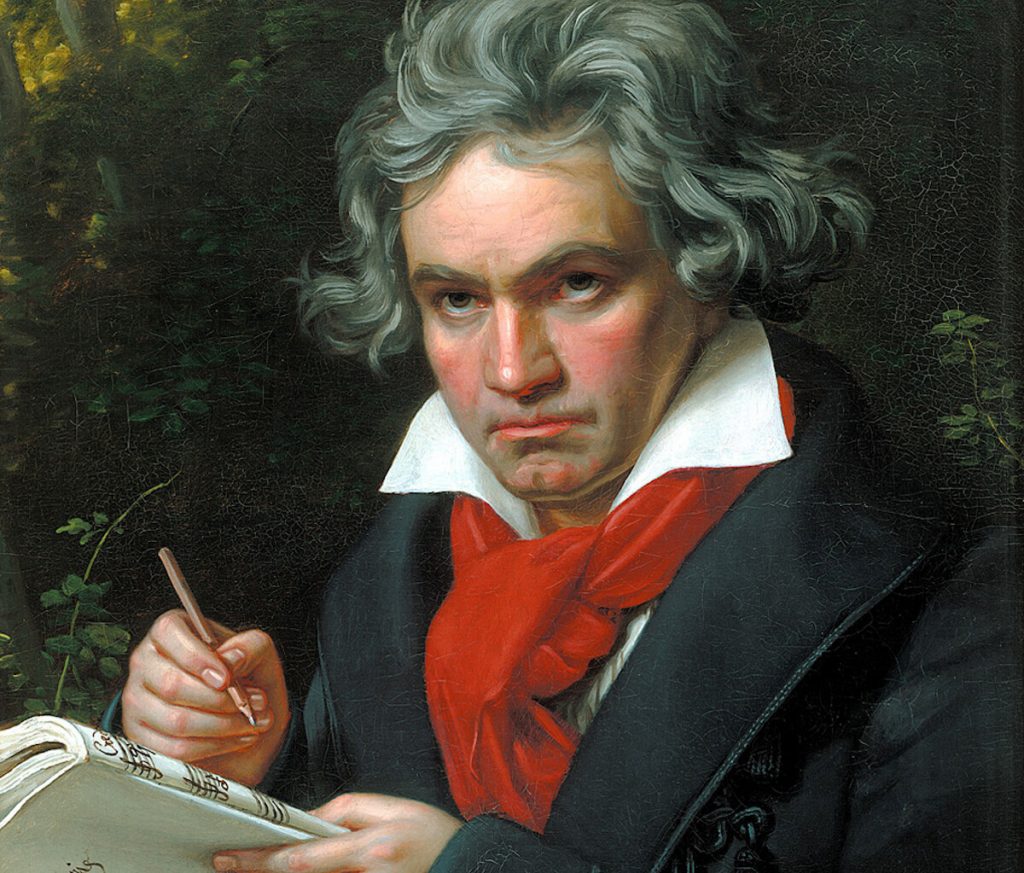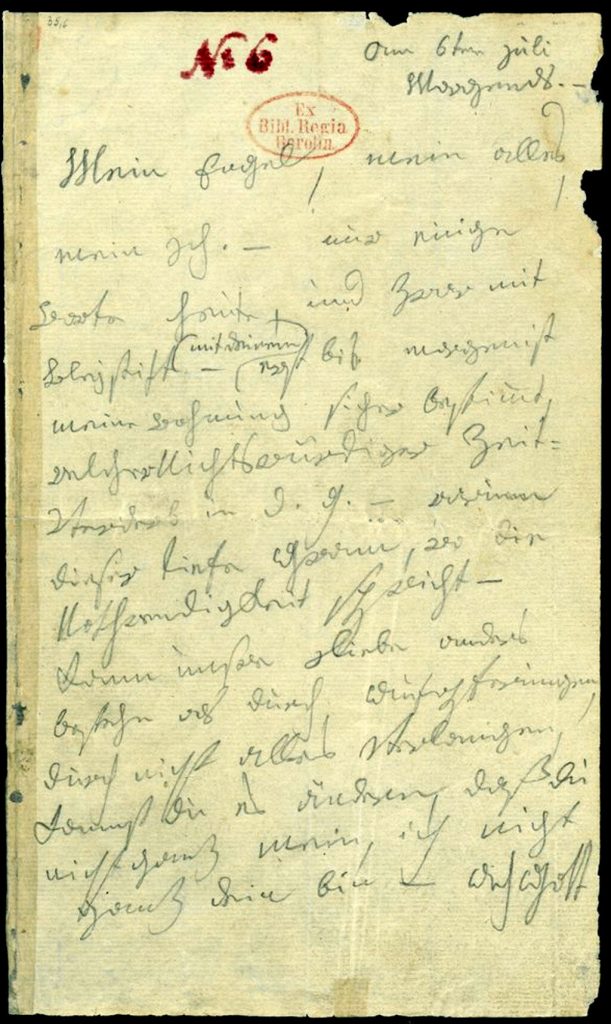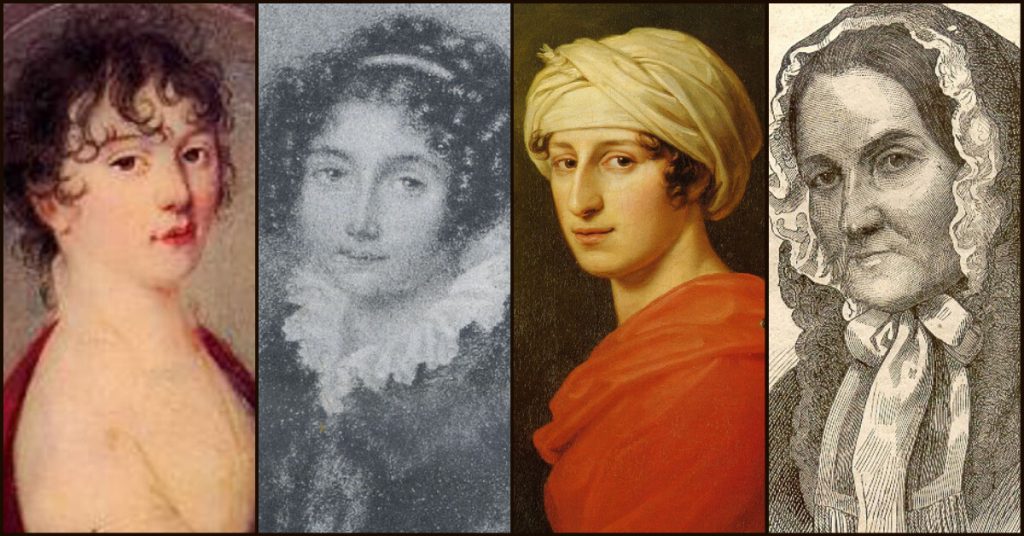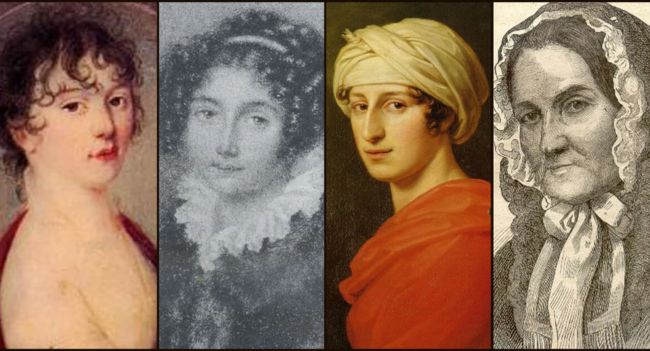Immortal Beloved refers to a 10-page unsent love letter found in Beethoven’s estate following his death in 1827. Beethoven did not indicate who the intended recipient is, but the most likely candidates are Countess Giulietta Guicciardi, Josephine von Brunsvik, Antonie Brentano, and Josephine’s sister, Countess Therese Brunsvik.
Classical Composer Ludwig van Beethoven
Ludwig van Beethoven (17 December 1770 – 26 March 1827) was an 18th-century German composer and musician whose music is still influential and inspiring today. His name is synonymous with classical music.

His legacy is more than the music he left behind, though. Unlike many other historic classic composers, Beethoven had a personality that resonated with his music. Films and literature have often portrayed him as a brooding artist who bordered on insane. He played his piano like a maniac until he went deaf and then played it like an outright lunatic if we were to believe the stories.
Of course, he did so to “feel” his music because he could no longer hear it. Nonetheless, his character stuck. He was unmarried, grumpy, and extremely talented. However, upon his death, another side of Beethoven became revealed — one that remains steeped in mystery.
An Interesting Discovery
The legendary composer died in 1827. He was in his 50s when he passed away. After his death, the discovery of a single letter written in three parts created quite a stir. Beethoven wrote the draft letter in pencil to a woman he referred to only as his Immortal Beloved (German: Unsterbliche Geliebte). It appears that he never sent the letter. Consequently, there is no date or addressee, which consists of 10 pages. However, the writing dates to 6-7 July 1812.
It is made abundantly clear in Beethoven’s letters to his Immortal Beloved that he is either very much in love with her or a gifted smooth talker. He opens the letter with, “My angel, my everything, my very self.” He goes on to say, “We will probably see each other soon . . .” and then leaves off the first part with “Your faithful Ludwig.”
About the Letter
The first part gives the impression that the two lovers have a past together, and their feelings are mutual. It also provides the impression that there is some difficulty in their relationship.
The second part opens with, “You are suffering, you my dearest creature . . .” Why is she suffering? He laments their lack of contact, giving the impression that her suffering is caused by their being apart or not getting letters from each other soon enough. He mentions he is upset that she will not get news from him until a later date.

In this part of the message, Ludwig van Beethoven writes, “. . . as much as you love me — I love you even more deeply . . .” By now, the reader knows there is a past there, but who could the recipient be? Did something prevent the letter from being sent? Did he see her before he could send the message? Was this the last of their relationship? Why are there no more letters?
It is in the last part of the letter Beethoven calls his mystery lover his Immortal Beloved. Also, this part gives the most extensive clues as to the nature of their relationship. He mentions the two of them wanting to live together, and this being a goal. It suggests this is a difficult thing to accomplish. Beethoven wonders to his lover whether conformity is possible in their relationship.
He ends the entire batch of papers with, “Forever mine, forever thine, forever us.” We know now there was no “forever us” for Ludwig van Beethoven.
Women in Beethoven’s Life
Through his letters, we know that he was something of a lover boy in his youth. He appears to have tended to love unobtainable women.
One of the most well-known recipients of his affections was Countess Giulietta Guicciardi. She was one of his pupils, and they shared a brief infatuation. However, Guicciardi belonged to an upper aristocratic social class that prevented their relationship from progressing. He dedicated his “Moonlight Sonata” to her, but that was as much of a connection as he could make.
Bruce Ivins and the 2001 Anthrax Letters
The next in line was Countess Josephine von Brunsvik. Josephine was married to a count before she began receiving love letters from Ludwig. Therefore, she could not pursue a deep relationship with him, or she risked her reputation and that of her children.
Beethoven’s amorous letters to Josephine ceased three years before writing this unaddressed letter. But she is still considered a potential recipient.
Identifying Beethoven’s Immortal Beloved
 Wikimedia Commons
Wikimedia CommonsSoon after Beethoven’s death in 1827, a letter was found in a secret drawer in his Vienna apartment. It was a 10-page rough draft written in pencil to someone Beethoven called “My Immortal Beloved.”
It begins, “My angel, my all, my own self.”
The letter is a complete swirl of emotions, both moving and heartfelt. He pleads and declares his special love and it appears reciprocal.
“While still in bed my thoughts rush to you, my Immortal Beloved, sometimes joyfully, other times sadly, waiting to see whether Fate will listen to us.”
Beethoven’s letter
Not once in the letter is the recipient revealed. For two centuries, her identity has been debated. There have been lots of contenders.
The 1994 Beethoven biopic “Immortal Beloved” concluded that “beloved” was Beethoven’s sister-in-law, Johanna van Beethoven. That theory has been debunked by just about everyone. He had a bitter custody battle with Johanna over his nephew after his brother died.
 Wikimedia Commons
Wikimedia CommonsAmazing detective work has been done over the last 30 to 40 years by musicologists around the world to solve the mystery. They analyzed and dated the actual paper of the letter and compared Beethoven’s diary to his appointment calendar to determine where he was at specific periods of time.
They decided the famous letter was written at a stagecoach roadside inn on Monday, July 7, 1812.
Beethoven had just left Prague and probably met his Beloved there. He was on a stopover en route to the spa village of Karlsbad in Bohemia where there was to be another rendezvous. With this information, many scholars have honed their guesses down to two women.
“Love demands everything and rightly so, and thus it is for me with you, for you with me …”
Beethoven’s letter
One of those women is Antonie Brentano.
She was a wealthy heiress that Beethoven would often visit, sometimes just playing the piano for her outside her bedroom door and suite. He loved her family and Beethoven was even friends with “Toni’s” husband. She’s a real possibility, but some surmise Beethoven’s moral high ground wouldn’t allow him to follow through having an affair with a married woman whose husband was a friend and even a financial advisor.
“Can our love persist except through sacrifice, through not demanding everything?”
Beethoven’s letter
The other contender is Josephine Von Brunswik. She moved in and out of Beethoven’s orbit over the years.
Many in their social circle thought the two ought to marry after she was widowed at a young age but apparently she turned him down because he was a commoner. (This would be a recurring theme in Beethoven’s life.)
However, they stayed close. In letters found and later published in the 1950s, he called her “My Angel” just like in the Immortal Beloved letter.
The research team at the Beethoven-Haus museum in Bonn, Germany (Beethoven’s birthplace) now believes Josephine is the one.
Some contemporary biographers like Maynard Solomon and Jan Swafford believe Beethoven and his Beloved covered their tracks with regards to the relationship.
It’s probably safe to say that after all this time (unless a mailed version of the letter is ever found) Immortal Beloved will just remain, Immortal Beloved.
“Ever thine. Ever mine. Ever us.”
Despite his deranged appearance in later years, he was quite dashing in his early portraits. He had no trouble getting these women to love him back. The problem was getting society to accept his choice in women.
The question is, was his adoration yet another high-class woman that Beethoven could not woo past letters, or was she one of the previous lovers he continued courting?

The most likely candidates as Beethoven’s Immortal Beloved include:
- Julie Guicciardi
- Josephine von Brunsvik
- Antonie Brentano
- Therese Brunsvik
Antonie Brentano was a married woman whose husband, Franz, was a close friend to Beethoven. Her father became ill, and Antonie suffered grief and depression over it. Beethoven helped her cope by playing his music to her for hours at a time.
Some speculate that it was Josephine’s sister, Countess Therese Brunswick. Therese was a pianist and one of Ludwig’s students. Interestingly, these two sisters are first cousins with Guicciardi.
However, out of all the possible candidates, Josephine is the favorite choice. After all, he wrote her over a dozen love letters in the past. Many of which shared similar wording.
The likely reason Beethoven never married is that these women were out of the reach of his social class. Perhaps Immortal Beloved was unattainable. Whatever the case may be, Beethoven never did settle down.
Ludwig’s Later Years
He spent much of his later life engaged in a fierce custody battle over his nephew against a sister-in-law who was decidedly unfit and a known thief. Beethoven also dealt with much depression over his hearing loss. He died as he lived — a bachelor with a string of love letters in his wake.
Historic Mysteries updated this article on 15 October 20202.
